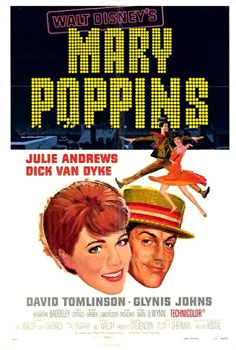
Mary Poppins is a 1964 American musical fantasy comedy film directed by Robert Stevenson and produced by Walt Disney, with songs written and composed by the Sherman Brothers. The screenplay is by Bill Walsh and Don DaGradi, based on P. L. Travers's book series Mary Poppins. The film, which combines live-action and animation, stars Julie Andrews in her feature film debut as Mary Poppins, who visits a dysfunctional family in London and employs her unique brand of lifestyle to improve the family's dynamic. Dick Van Dyke, David Tomlinson, and Glynis Johns are featured in supporting roles. The film was shot entirely at the Walt Disney Studios in Burbank, California, using painted London background scenes.

The Sherman Brothers were an American songwriting duo that specialized in musical films, made up of brothers Robert B. Sherman and Richard M. Sherman. Together they received various accolades including two Academy Awards and three Grammy Awards. They received nominations for a Laurence Olivier Award, a BAFTA Award, and five Golden Globe Awards. In 1976, they received a star on the Hollywood Walk of Fame, and the National Medal of the Arts in 2008.

Richard Morton Sherman is an American songwriter who specialized in musical films with his brother Robert B. Sherman. According to the official Walt Disney Company website and independent fact checkers, "the Sherman Brothers were responsible for more motion picture musical song scores than any other songwriting team in film history."

Robert Bernard Sherman was an American songwriter, best known for his work in musical films with his brother, Richard M. Sherman. The Sherman brothers produced more motion picture song scores than any other songwriting team in film history. Some of their songs were incorporated into live action and animation musical films including Mary Poppins, The Happiest Millionaire, The The Sword in the Stone, The Jungle Book, The Many Adventures of Winnie the Pooh, Chitty Chitty Bang Bang, The Slipper and the Rose, and Charlotte's Web. Their best-known work is "It's a Small World " possibly the most-performed song in history.
Walt Disney Records is an American record label of the Disney Music Group. The label releases soundtrack albums from The Walt Disney Company's motion picture studios, television series, theme parks, and traditional studio albums produced by its roster of pop, teen pop, and country artists.
Cindy O'Callaghan is an Irish-born British psychologist and former actress. Her acting career began in her adolescence, when she was chosen to play the part of Carrie Rawlins in the Disney feature film Bedknobs and Broomsticks in 1971. She has appeared in a wide range of television programmes and films since, including BBC's EastEnders, where she played Andrea Price for several stints in the 1990s. Her last credited role was in 2001, and she has since given up acting to become a child psychologist.

Classic Disney: 60 Years of Musical Magic is a five-volume compilation series, each containing 25 songs compiled from Disneyland and Walt Disney World, various Disney films in animation and live-action, and the Walt Disney anthology television series. Each volume was released individually on CD and cassette between 1995 and 1998. Volume I was released on March 28, 1995, Volume II on September 12, 1995, Volume III on July 2, 1996, Volume IV on July 15, 1997 and Volume V on September 22, 1998. In 2000, a box set was released containing volumes 1 - 3, followed by a box set containing volumes 1 - 4 in 2001, Finally, a box set containing all five volumes packaged in a slipcase was released by Walt Disney Records in Australia, Japan, North America and Europe in 2003.
"The Age of Not Believing" is a song written by Robert and Richard Sherman for the 1971 Walt Disney musical film production Bedknobs and Broomsticks. Angela Lansbury sings the song in the motion picture. In the lyrics, Lansbury's character Eglantine expresses how as children grow up, they lose their belief in magic and doubt themselves. The song works on two levels, both on a personal, human level and thematically for the whole film - a Britain grown cynical from the pressures of war must learn to borrow from its own past magic in order to overcome the tremendous challenge which lies before it, while the characters in the film must finally learn to trust in Eglantine's magic to achieve their goals and save Britain from the Nazis.
Irwin Kostal was an American musical arranger of films and an orchestrator of Broadway musicals.
"The Beautiful Briny" is a song written by Robert and Richard Sherman, originally for the Walt Disney film Mary Poppins, but eventually used instead in the 1971 musical film production Bedknobs and Broomsticks. David Tomlinson and Angela Lansbury perform the song as a duet under the water, in the lagoon of the Island of Naboombu.
"Portobello Road" by the Sherman Brothers is a song, specifically a waltz (3/4) about Portobello Road in London, England. It was written for the 1971, Walt Disney musical film production Bedknobs and Broomsticks. It is sung by David Tomlinson about a street where, to this day–
Anything and everything a chap can unload
Is sold off the barrow in Portobello Road
"A Step in the Right Direction" is a song written by Robert and Richard Sherman for the 1971, Walt Disney musical film production Bedknobs and Broomsticks.
When a baby spider
tries to trap a fly
Often times, the silken thread
Will come awry
Though a tangled web is all that he can claim
It's a step in the right direction all the same

Hal Gordon Gausman was an American set decorator. He was nominated for five Academy Awards in the category Best Art Direction.

Mary Poppins: Original Cast Soundtrack is the soundtrack album of the 1964 film Mary Poppins, with music and lyrics written by songwriters Richard M. Sherman and Robert B. Sherman, and adapted and conducted by Irwin Kostal.

Mary Poppins Returns is a 2018 American musical fantasy comedy film directed by Rob Marshall, with a screenplay written by David Magee and a story by Magee, Marshall, and John DeLuca. Loosely based on the book series Mary Poppins by P. L. Travers, the film is a sequel to the 1964 film Mary Poppins, and stars Emily Blunt as Mary Poppins, with supporting roles from Lin-Manuel Miranda, Ben Whishaw, Emily Mortimer, Julie Walters, Dick Van Dyke, Angela Lansbury, Colin Firth, Meryl Streep, and David Warner in his final film appearance. Set in London during the Great Depression, the film sees Mary Poppins, the former nanny of Jane and Michael Banks, return to them in the wake of the death of Michael's wife.
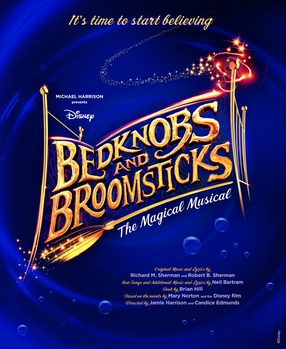
Bedknobs and Broomsticks is a stage musical based on the 1971 Walt Disney film and the stories by Mary Norton. It features the original songs by Richard M. Sherman and Robert B. Sherman, new songs and additional music and lyrics by Neil Bartram and book by Brian Hill.

Mary Poppins Returns: Original Motion Picture Soundtrack is the soundtrack album for the film of the same name. The songs and score for the film were composed by Marc Shaiman, with song lyrics written by Scott Wittman and Shaiman. The soundtrack album was released by Walt Disney Records on December 7, 2018.
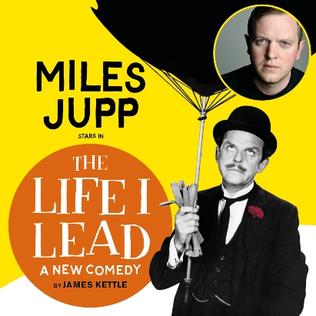
The Life I Lead is a one-man comedy play by James Kettle about the life of English actor David Tomlinson.
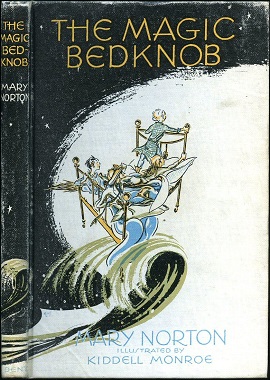
The Magic Bedknob; or, How to Become a Witch in Ten Easy Lessons is a 1944 children's book by Mary Norton. The book was later adapted into the Disney film Bedknobs and Broomsticks.
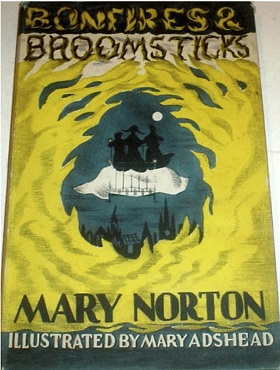
Bonfires and Broomsticks is a 1947 children's book by Mary Norton. Parts of the book were adapted into the 1971 Disney film Bedknobs and Broomsticks.













